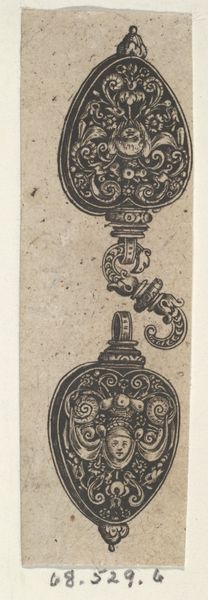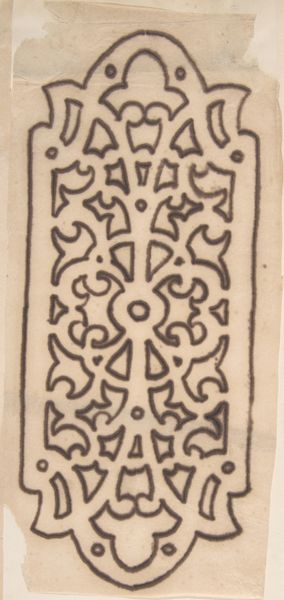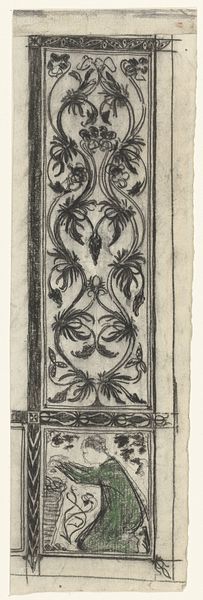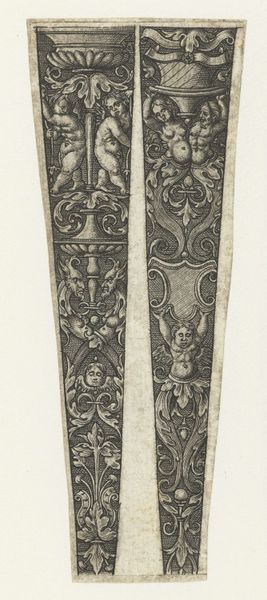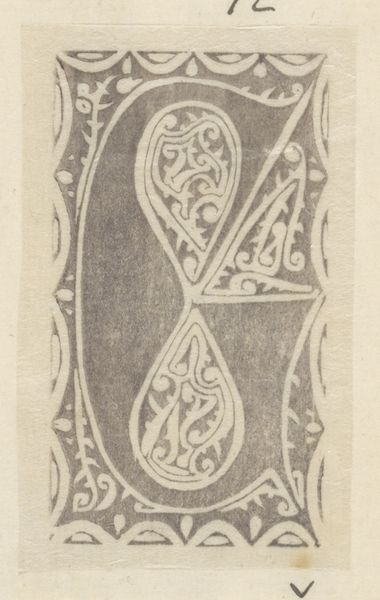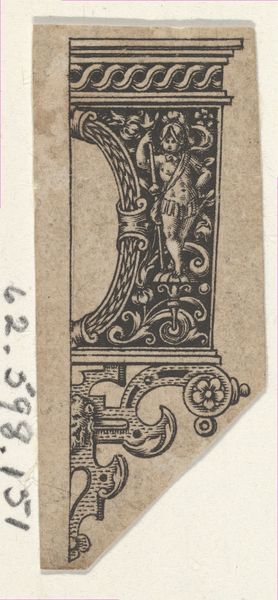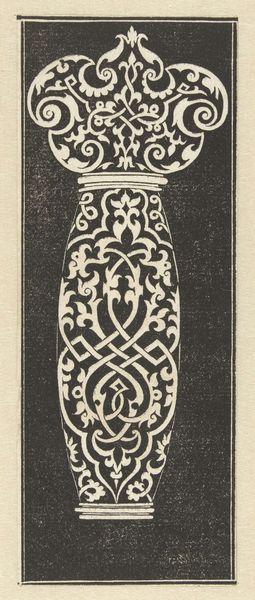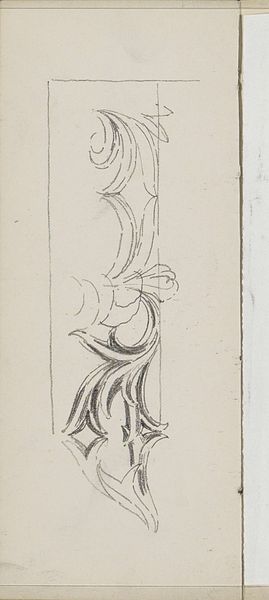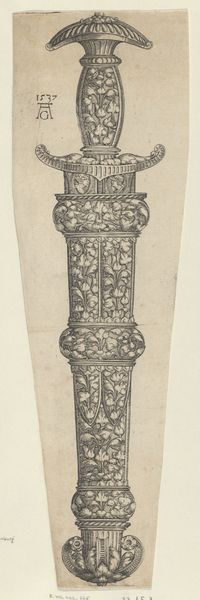
drawing, ink, engraving
#
drawing
#
baroque
#
pen drawing
#
old engraving style
#
ink
#
geometric
#
engraving
Dimensions: height 95 mm, width 12 mm
Copyright: Rijks Museum: Open Domain
Editor: So, here we have a 17th-century pen and ink drawing called "Vignet met een scepter" by an anonymous artist. It's quite a slender piece, almost like an emblem. What do you see in it? How should we approach it? Curator: Well, this image immediately sparks questions about power, representation, and social hierarchies within the Baroque period. Scepters, of course, are symbols of authority, but whose authority? Consider how gender and class intersect in this seemingly simple object. Was it an emblem, a symbol of identity, a representation of something much larger? Editor: That’s fascinating. I was mainly focused on its decorative quality, its simple lines and old engraving style. Curator: Right, and those formal qualities are vital! Think about who was producing and consuming these images in the 17th century. Was it targeted to a specific segment of society, to cement class structure? And does the floral motif, the fleur-de-lis, evoke notions of divine right, a tool to uphold unequal distribution of power? Editor: So, even a decorative drawing of a scepter is loaded with meaning! I never thought to examine it that way. Curator: Absolutely! Art doesn’t exist in a vacuum. Looking at its cultural function reveals how art reinforces or even challenges existing social narratives. The act of drawing becomes more political, and we begin to ask urgent questions. What does the piece mean today, and how do we use this as a basis for important conversation and action? Editor: It is exciting to unravel history's legacy. Thinking about visual language in art, through the lens of class, power and politics definitely gives this drawing much more depth and makes the artwork so relevant to the modern era.
Comments
No comments
Be the first to comment and join the conversation on the ultimate creative platform.
